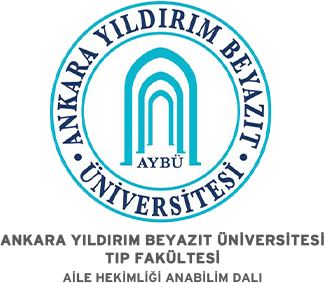Adölesanlarda İnternet Bağımlılığı İle Beslenme Egzersiz Davranışları Arasındaki İlişki
Ayla Hendekci1, İlknur Aydın Avcı21Giresun Üniversitesi Sağlık Bilimleri Fakültesi, Halk Sağlığı Hemşireliği Anabilim Dalı2Ondokuz Mayıs Üniversitesi Sağlık Bilimleri Fakültesi, Halk Sağlığı Hemşireliği Anabilim Dalı
GİRİŞ ve AMAÇ: Bu araştırma, adölesanlarda internet bağımlılığı ile beslenme egzersiz davranışları arasındaki ilişkinin incelenmesi amacıyla yapılmıştır.
YÖNTEM ve GEREÇLER: Tanımlayıcı türdeki araştırmanın evreni, Giresun ilindeki bir ortaokulda öğrenim gören 6, 7 ve 8. sınıftaki adölesan dönem öğrencileridir (n=440). Araştırmaya katılmayı kabul eden ve ulaşılabilen 400 öğrenci ile araştırma tamamlanmıştır (%91). Veriler, Tanıtıcı Bilgi Formu, İnternet Bağımlılık Ölçeği (İBÖ) ve Beslenme Egzersiz Davranışları Ölçeği (BEDÖ) ile toplanmıştır. Veriler SPSS 20.00 programı ile analiz edilmiş ve tanımlayıcı istatistikler (frekans, yüzde, varyans, t testi, Kruskall Wallis testi) kullanılmıştır.
BULGULAR: Araştırmaya katılanların yaş ortalaması 12,25±0,98 olup %51,25i kadın, % 50,75i interneti en az bir saat kullanmakta ve %31,75i interneti bilgilenmek amacıyla kullanmaktadır. Adölesanların İBÖ ve Sağlıksız Beslenme-Egzersiz Davranışı boyutu puanları erkeklerin aleyhine bulunmuş, adölesan okul başarısı ile internet bağımlılığı ve beslenme egzersiz davranışları arasında bir ilişki olduğu ve adölesanların günlük olarak internette geçirdikleri zaman ve internet kullanım amacına göre İBÖ ve BEDÖ puanları arasında ilişki olduğu bulunmuştur.
TARTIŞMA ve SONUÇ: Adölesanların farklı tanımlayıcı özelliklerine göre internet bağımlılığı ve beslenme egzersiz davranışları arasında ilişki olduğu görülmektedir. Risk faktörlerinin erken dönemde belirlenmesi, okul-aile-öğrenci ile işbirliği yapılması gerekmekte olup adölesanların uygun eğitimlerle desteklenmesi önerilmektedir.
The Relatıonshıp Between Internet Addiction And Nutrıtıon Exercıse Behavıors In Adolescents
Ayla Hendekci1, İlknur Aydın Avcı21Giresun University Faculty Of Health Sciences, Department Of Public Health Nursing2Ondokuz Mayıs University Faculty Of Health Sciences, Department Of Public Health Nursing
INTRODUCTION: The aim of this study was to investigate the relationship between internet addiction and nutrition exercise behaviors in adolescents.
METHODS: The universe of the descriptive study is the 6th, 7th and 8th grade adolescent students studying in a secondary school in Giresun (n = 440). The study was completed with a total of 400 students who agreed to participate in the study (91%). Data were collected by using the Descriptive Information Form, Internet Addiction Scale (IAS) and Nutrition Exercise Behavior Scale (NEBS). The data were analyzed with SPSS 20.00 program and descriptive statistics (frequency, percentage, variance, t test, Kruskall Wallis test) were used.
RESULTS: The mean age of the participants was 12.25±0.98 and 51.25% were women, 50.75% were using the internet for at least one hour and 31.75% were using the internet for information purposes. The IAS and Unhealthy Nutrition-Exercise Behavior dimension scores of adolescents were found to be against the males. There is a relationship between adolescent school achievement and internet addiction and nutrition exercise behaviors, IAS and NEBS scores according to the time spent by the adolescents on the internet daily and the purpose of internet use.
DISCUSSION AND CONCLUSION: It is seen that there is a relationship between internet addiction and nutrition exercise behaviors according to different descriptive characteristics of adolescents. Early identification of risk factors and cooperation with school-parents-students is required and it is recommended that adolescents are supported with appropriate training.
Makale Dili: Türkçe
(2466 kere indirildi)





